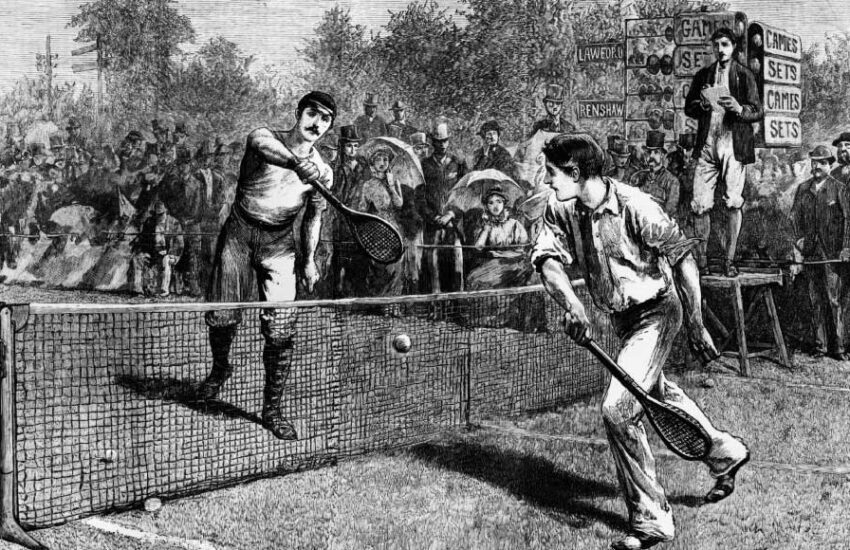Understanding the Significance of ‘Ad’ Terminology in Tennis
In the world of tennis, the term “Ad” serves as a concise means to signify “advantage,” marking a specific juncture where a player briefly seizes a superior position in the ongoing match. This scenario unfolds when the score is deadlocked at 40-40, a situation commonly referred to as a “deuce.” At this critical juncture, should a player emerge victorious in the subsequent point, they ascend to the advantageous position. This pivotal moment presents the victor of that point with a golden opportunity to claim the game, provided they can also secure the following point.
The competition endures until one of the participants successfully accumulates two consecutive points, thereby clinching victory. However, if the player in possession of the advantage falters and surrenders the following point, the score promptly reverts to a state of equilibrium, symbolizing a return to the deuce situation.
Demystifying Tennis Scoring: A Comprehensive Guide
Tennis, often hailed as the “sport of kings,” features a scoring system that adds an intriguing layer of strategy and excitement to the game. Let’s dive deeper into how scoring works in tennis, unraveling its intricacies and uncovering the keys to victory.
The Fundamental Building Block: The Point
In the realm of tennis, the nucleus of all activity unfolding on the court is encapsulated within the notion of a “point.” This singular point serves as the elemental foundation for scoring, bestowing its coveted reward upon a player who emerges victorious in a spirited rally waged against their adversary. Within these dynamic rallies lies the very essence of the game, where the players’ prowess, nimbleness, and tactical acumen are vividly displayed.
Points can be garnered in various ways:
- Winning a Rally: The most common way to earn a point is by outplaying your opponent in a rally, often punctuated by a well-placed shot that the opponent cannot return;
- Faults from Opponent: If your opponent commits an error, such as hitting the ball out of bounds or into the net on your side of the court, you are granted the point as a result of their mistake.
The Scoreboard: Keeping Track
Tennis scoring can seem cryptic, especially to newcomers. However, it follows a systematic pattern that adds to the excitement of the game. When you watch a match, you’ll often hear the scores announced as follows:
Scoreboard Update: Initially, the server’s score takes the spotlight, being the first to be vocalized. It serves as a numerical reflection of the points they’ve successfully garnered.
Next up, we have the receiver’s score. This score follows in the wake of the server’s and serves as a testament to their accumulated points.
As an illustration, if the server boasts three points in their favor while the receiver has managed to secure two, the score is eloquently articulated as “30-15.” In this intricate numerical dialect, “30” graciously signifies the server’s impressive tally of points, while “15” eloquently conveys the receiver’s commendable score.
The Race to Victory: Game, Set, Match
Understanding how to win a tennis match involves grasping the hierarchy of scoring:
The Fundamentals of a Game in Tennis
- Definition: In tennis, a game serves as the fundamental unit of measurement in a match;
- Scoring Mechanics: Players aim to be the first to gain four points. Points in tennis are counted as 15, 30, 40, and then the winning point;
- Tie Scenario – Deuce: When both players reach a score of 40 (commonly referred to as “40-40”), this is termed as ‘deuce’;
- Advantage Play: Post-deuce, a player must win two consecutive points to secure the game. This introduces a dynamic challenge, as merely leading by a single point is insufficient;
- Strategic Implications: This rule adds a layer of strategic depth, where players must consistently outmaneuver their opponent to gain the upper hand.
Sets: The Building Blocks of a Tennis Match
- Composition: A set in tennis is composed of several games;
- Winning Criteria: The standard requirement to win a set is to win six games;
- Two-Game Lead Requirement: Crucially, a player must win by at least a two-game margin. This means a 6-4 score indicates a player has won six games with a lead of two games over the opponent;
- Tactical Considerations: This rule emphasizes the importance of maintaining consistent performance and the ability to break the opponent’s serve.
The Tennis Match: Climax of the Contest
- Match Structure: A tennis match is typically a contest to win the best of three sets;
- Variations: In some tournaments, matches might be determined by winning two out of three sets;
- Tie-Breaker Mechanism: In the event of a set tie, a tie-breaker game is employed. This is often a high-pressure, fast-paced game that requires players to be at their mental and physical peak;
- Dramatic Element: Tie-breakers add an intense, unpredictable element to matches, often becoming the highlight of the contest.
Understanding “Deuce” in Tennis: A Game-Changing Moment
In the captivating world of tennis, the term “deuce” serves as a pivotal juncture that can alter the course of a match. When the score reaches 40-40, players and spectators alike are thrust into this electrifying scenario. But what exactly does “deuce” signify, and how does it influence the outcome of a game? Let’s delve deeper into this tennis enigma and unravel the strategies and nuances that revolve around it.

The Deuce Situation: A Level Playing Field
When the scoreboard reads 40-40 in a tennis match, it’s time to introduce the term “deuce.” This intriguing moment signifies a dead heat, where both players have an equal shot at claiming victory in the game. It’s a high-stakes showdown that can send adrenaline coursing through the veins of competitors and fans alike.
Navigating the Deuce Dilemma
Once a game reaches deuce, the rules change, and the stakes become even higher. To win the game, a player must now secure not just one but two consecutive points. This added layer of complexity elevates the tension on the court and requires a keen strategic mindset.
Tips for Winning at Deuce:
- Serve Smart: A well-placed serve can put your opponent on the defensive, increasing your chances of scoring the crucial two consecutive points;
- Stay Aggressive: Don’t let up on your aggression. Take calculated risks and go for winners when you see an opportunity;
- Mindset Matters: Maintain focus and composure. Deuce situations often come down to mental fortitude, so staying cool under pressure is paramount;
- Vary Your Shots: Surprise your opponent with a mix of shots – forehands, backhands, volleys, and lobs. Keep them guessing to gain an advantage.
The Deuce Drama Unfolds
Intriguingly, the game must persist until one of the players successfully strings together two consecutive points. This can lead to nail-biting moments, as both players relentlessly vie for that elusive advantage. Each point won is a step closer to victory, but the margin for error remains slim.
Deuce Reset: A Rollercoaster of Emotions
In an unexpected twist, if the player who initially wins the first point after deuce loses the subsequent point, the score resets back to deuce. This dynamic keeps the spectators on the edge of their seats, as it prolongs the battle and adds another layer of unpredictability to the game. Read about the world of tennis and discover intriguing facts about the sport. Get ready to serve up some surprising ‘Facts About Tennis‘!
Conclusion
In conclusion, understanding the concept of “Ad” in tennis, which signifies “advantage,” is pivotal in comprehending the intricate dynamics of the game. It represents a pivotal moment when one player gains a temporary upper hand over their opponent, often dictating the outcome of the match. The interplay between advantage and deuce adds depth to the sport, as it highlights the importance of consistency and strategy in securing victory. As the game unfolds, players must strive to maintain their advantage, knowing that a single misstep can reset the score to an even footing. Thus, “Ad” in tennis encapsulates not only the excitement but also the strategic complexity that makes the sport so captivating for players and fans alike.



